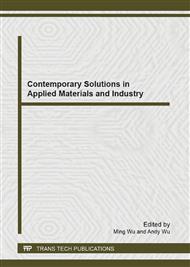p.211
p.217
p.222
p.226
p.230
p.234
p.239
p.243
p.247
Flexural Behavior of High Strength Reinforced Concrete Beams by Replacement Ratio of Recycled Coarse Aggregate
Abstract:
Recently, many structures which were built about 30 years ago are watched by reconstruction. Demolished concrete is occurred in the process and these quantity increase about 10% more than the preceding year. Fortunately, recycled aggregates are produced from demolished concrete, whereas the recycled aggregates are not used often because there are not many researches which have been verified by experts or researchers about strength when reinforced concrete is made with recycled aggregates. In this paper, high strength reinforced concrete is valued with potential applications and check change of strength when it made by recycled aggregates. For this, flexural tests of 4 high strength reinforced concrete beams with recycled aggregates were performed, and the high strength reinforced concrete beams were tested within the limits such as compressive strength, flexural strength, ductility, strain, and curvature. The current test data were examined in terms of flexural strength, along with the data from previously tested reinforced concrete beams with recycled aggregates.
Info:
Periodical:
Pages:
230-233
Citation:
Online since:
April 2013
Price:
Сopyright:
© 2013 Trans Tech Publications Ltd. All Rights Reserved
Share:
Citation:


